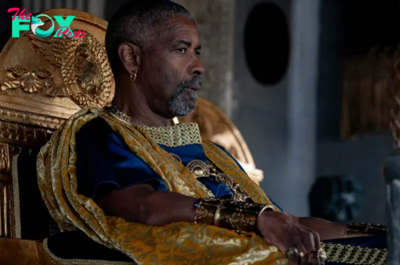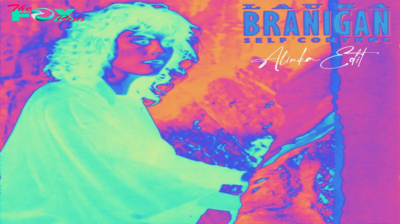Entertainment
DQ The 1962 El Tiburón Roadster: A Visionary Design and a True Automotive Rarity
In the world of classic cars, few vehicles capture the imagination quite like the 1962 El Tiburon Roadster. This unique and striking roadster, often simply referred to as “El Tiburon,” is a testament to the artistry and innovation of its era. With its sleek design, remarkable engineering, and limited production, the 1962 El Tiburon Roadster remains a cherished and sought-after collector’s item that continues to fascinate automotive enthusiasts around the world. In this article, we’ll take a journey back in time to explore the history, design, and enduring allure of the 1962 El Tiburon Roadster.

A Passion for Design: The Origins of the El Tiburón Roadster
Henry Covington, the man behind the El Tiburón Roadster, was not a traditional automotive designer. He was an engineer by trade with a passion for aerodynamics and a fascination with the natural world. Covington believed that the principles of aerodynamics could be applied to automotive design to create a vehicle that would be both visually striking and highly efficient.

Inspired by the sleek, streamlined forms of sharks, Covington set out to create a car that would embody the elegance and efficiency of these apex predators. He began by constructing a wooden model, carefully shaping the curves and contours of the body to optimize airflow and reduce drag. The result was a design that was both futuristic and organic, with a low, sleek profile that was reminiscent of a shark gliding through the water.
In 1962, Covington brought his vision to life, constructing the first El Tiburón Roadster on the chassis of a 1960 Renault Dauphine. The car was an immediate sensation, garnering attention and acclaim from both the automotive industry and the public at large.
The Design of the 1962 El Tiburón Roadster
Exterior Design
The exterior of the El Tiburón Roadster is defined by its sleek, curvaceous body, which was designed to minimize air resistance and maximize efficiency. The car features a long, tapered nose, a low, sloping roofline, and a distinctive “fishtail” rear end, which combine to create a striking and unmistakable silhouette.

Other notable design elements of the El Tiburón Roadster include:
– A wraparound windshield, which provides excellent visibility and contributes to the car’s streamlined appearance.
– A distinctive grille, which is integrated into the front bumper and features horizontal slats that echo the gills of a shark.
– Recessed headlights, which are protected by clear plastic covers that maintain the smooth lines of the car’s body.
– A minimalist rear bumper, which incorporates the car’s taillights and license plate holder in a subtle and unobtrusive manner.
The El Tiburón Roadster’s body was constructed from fiberglass, a lightweight and durable material that was relatively new to automotive applications in the early 1960s. The use of fiberglass allowed Covington to create complex curves and shapes that would have been difficult or impossible to achieve with traditional metal bodywork.

Interior Design
The interior of the 1962 El Tiburón Roadster is characterized by its simplicity and focus on functionality. The cabin features a minimalist layout, with a streamlined dashboard that houses essential controls and gauges in an uncluttered and easily accessible manner.
The seats in the El Tiburón Roadster are low-slung and sporty, providing excellent support and comfort for both the driver and passenger. The car’s compact dimensions and low roofline result in a somewhat cozy cabin, but the wraparound windshield and large side windows help to create an open and airy feel.

The El Tiburón Roadster’s interior is notable for its lack of ornamentation and extraneous features, a reflection of Covington’s belief in the importance of form following function. The result is a cabin that is both aesthetically pleasing and highly practical, with every element serving a specific purpose.
Performance and Engineering
At the heart of the 1962 El Tiburón Roadster lies a Renault Dauphine chassis and mechanical components, which provide the car with a solid foundation and proven performance capabilities.
Powertrain
The El Tiburón Roadster is powered by a rear-mounted, 845cc inline-four engine sourced from the Renault Dauphine. This engine produces 32 horsepower and is mated to a four-speed manual transmission. While not particularly powerful by modern standards, the engine provides adequate performance for the lightweight Roadster and is well-suited to the car’s emphasis on efficiency and aerodynamics.

Suspension, Steering, and Brakes
The El Tiburón Roadster features a fully independent suspension system, with coil springs and hydraulic shock absorbers at all four corners. This setupprovides the car with a comfortable and compliant ride, as well as responsive handling characteristics.
The steering system in the El Tiburón Roadster is a manual rack-and-pinion arrangement, which offers precise and direct feedback to the driver. This setup, combined with the car’s lightweight construction and low center of gravity, contributes to the Roadster’s nimble handling and agility.

The braking system in the 1962 El Tiburón Roadster consists of drum brakes on all four wheels. While not as advanced as disc brakes, which were becoming more common at the time, the drum brakes provide adequate stopping power for the lightweight roadster.
Aerodynamics
One of the most significant aspects of the El Tiburón Roadster’s design is its focus on aerodynamics. Covington’s extensive knowledge of aerodynamic principles allowed him to create a car that was not only visually striking but also highly efficient in terms of airflow and drag reduction.

The car’s sleek, shark-inspired bodywork, low-slung profile, and recessed headlights all contribute to its impressive aerodynamic efficiency. The result is a vehicle that is capable of achieving relatively high speeds and respectable fuel economy despite its modest power output.
The Legacy of the 1962 El Tiburón Roadster
The 1962 El Tiburón Roadster is a true automotive rarity, with only a handful of examples ever produced. Covington’s vision of a shark-inspired, aerodynamically efficient Sports car was undeniably ahead of its time, and his creation stands as a testament to the power of innovation and the enduring appeal of visionary design.

While the El Tiburón Roadster did not achieve widespread commercial success, it has nevertheless left a lasting impact on the world of automotive design. Its distinctive silhouette, pioneering use of fiberglass bodywork, and emphasis on aerodynamic efficiency have all iNFLuenced subsequent generations of Sports cars and concept vehicles.
Today, the El Tiburón Roadster enjoys a cult following among car enthusiasts and collectors, who appreciate its unique design, innovative features, and limited production status. The few remaining examples are highly sought after and are considered to be valuable pieces of automotive History.

The 1962 El Tiburón Roadster is a shining example of what can be achieved when creativity, engineering expertise, and a passion for design come together. Henry Covington’s shark-inspired creation is a testament to the power of innovation and a reminder that sometimes, the boldest ideas can lead to the most enduring and captivating results.
From its stunning exterior design to its pioneering use of materials and emphasis on aerodynamic efficiency, the El Tiburón Roadster stands as a unique and fascinating chapter in the History of automotive design. It is a vehicle that continues to captivate and inspire, reminding us that the pursuit of excellence and the willingness to challenge convention can lead to extraordinary outcomes.
As we look back on the 1962 El Tiburón Roadster, we are reminded of the importance of visionary thinking and the power of innovative design. In a world where automotive design is constantly evolving and pushing the boundaries of what is possible, the El Tiburón Roadster serves as a timeless reminder of the potential for greatness that lies within us all.
-

 Entertainment46m ago
Entertainment46m agoDid You Correctly Answer This Poughkeepsie Related Jeopardy Question?
-

 Entertainment4h ago
Entertainment4h agoWhat to Know About Denzel Washington’s Gladiator II Character
-

 Entertainment6h ago
Entertainment6h agoChanges Made in New York to “Men Working” Construction Signs
-

 Entertainment9h ago
Entertainment9h agoSuggestions for delivering a POWERFUL OPENING.
-

 Entertainment9h ago
Entertainment9h agoAmerica On CoffeeWe’re simply inviting you to take a timeout into the rhythmic ambiance of our breakfast, brunch and/or espresso picks. We’re completely happy everytime you cease by.BAD DREAMS – TEDDY SWIMS
-

 Entertainment14h ago
Entertainment14h agoRemembering Song Jae-rim: A Look at His Best Movies and K-Drama Performances
-

 Entertainment1d ago
Entertainment1d agoAmerica On CoffeeWe’re simply inviting you to take a timeout into the rhythmic ambiance of our breakfast, brunch and/or espresso alternatives. We’re pleased everytime you cease by.SELF CONTROL
-

 Entertainment1d ago
Entertainment1d agoOrange County Choppers Is Ready For Its Big Comeback



























